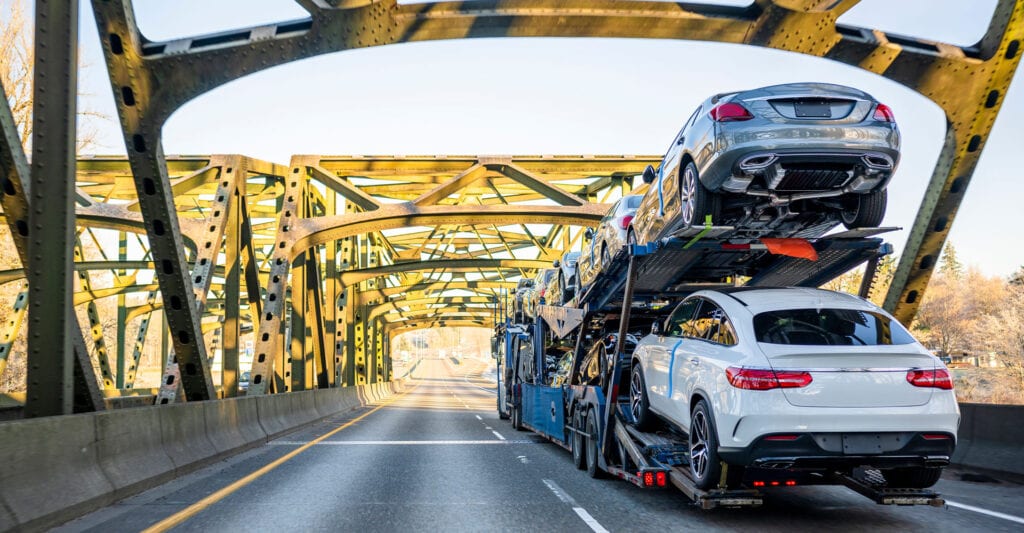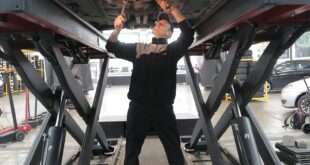Auto transportation also referred to as car hauling or vehicle shipping, is the shipping of a car from one state to another or internationally. In the past, auto transportation was primarily completed by dealers, vehicle manufacturers, and brokers. Nowadays, it’s a standard service.
You can purchase a car from any location and have it shipped to your doorstep, with ease. With more vehicles, big and small, being sold on online platforms, auto transportation is more essential than ever. The auto-transportation process involves a lot of planning, research, and even a team of professionals.
As you search for a reliable auto transport company, look for companies like Guardian Auto Transport that offer a stress-free booking and shipping experience. Trusting an auto transport company to protect your processions can rattle your nerves. With a dependable auto shipping service, you’ll be treated like a family, and your car will be cared for impeccably.
Ultimately, an auto transportation company should simplify the shipping experience and take the time to build deep connections with its clients. Here’s what you should know before hauling your car cross-country or between states.
Type of car transport

You can either ship your car through enclosed or open vehicle transport. Open transport is more accessible, more affordable, and allows you to communicate directly with the driver to monitor the entire process. As a downside, however, auto transportation can expose your vehicle to the elements and delays delivery time, typically between 10 and 14 days from pick-up, depending on mileage and route.
Enclosed transport is the safest way to ship your vehicle during long road trips and is primarily used to ship exotic luxury and classic cars. Although it costs more than open transport, it provides maximum protection, as it’s completely insured, protects the vehicle from unexpected weather or on-the-road damage like a snowstorm or rock chips, and offers shorter delivery times. Few vehicle haulers offer enclosed transport, so it’s best to book early to guarantee a spot.
Choosing an auto transport company

There are several auto transport companies on-the-market, making it difficult for the consumer to choose the best one—but it’s not an impossible decision. Asking around and conducting a quick online search for consumer reviews helps identify the quality of services offered by a variety of companies. Remember, it’s better to hire a company that prioritizes your needs and can resolve any issues when they arise. Working with a large company will ensure that a company is well-staffed, and therefore, ready to address any mishaps.
Preparing your car for transportation

Once you choose how and who will transport your car, the next step is ensuring that it arrives safely. If you want your vehicle to come in tip-top shape, it’s essential to properly prepare it for shipping. For more details, you can check shipvehicles.com.
For the most part, preparing your car for transportation is a straightforward process, so it shouldn’t take a lot of time. You can consult your shipping company for preparation tips. Here’s what you should do before the shipping company picks your car on your scheduled date.
Conduct a Comprehensive Inspection

Dust and dirt can cling to dents, dings, and scratches, so before you perform any inspections, clean your car thoroughly. Aside from making imperfections more visible, it’s nice to have a clean vehicle, and it’ll save you cleaning time once it arrives. Once it’s spotless, locate any existing scrapes and dents. Although it’s unlikely that the shipping process will cause destruction, you should also inspect your vehicle for new defects upon arrival. You should also perform a close inspection for leaks, flat tires, etc. and record the odometer mileage.
If you discover any dents, dings, or scratches, you should photograph these existing damages. Be sure to capture high-quality images from different angles. Photographic records are useful in the event that a shipping company denies the damage or refuses responsibility.
Perform car maintenance

Completing vehicle maintenance prior to shipping will ensure that you’re able to immediately drive your car once it’s delivered. Your maintenance checklist should include confirming the car’s battery is fully-charged, emptying the gas tank to a quarter or eighth full, properly inflating the tires, and checking the fluids, including washer fluid, oil, engine coolant. You’ll also need to check the status of your brakes and power steering.
Over or under-inflation of the car tires may cause damages during the unloading and loading process. It’s unnecessary to have a full tank during shipment since the car won’t be driven and the weight of the gasoline will actually add more weight to the car, escalating costs. This extra weight can also make the shipping process more stressful. Prior to shipping, be sure to disable any alarms to facilitate peaceful transportation for your shipping provider.
Secure the vehicle’s exterior

If you have any removable parts like luggage racks and ski bikes, or custom installations, make sure you secure them or remove them entirely. It would help if you also adjusted folding side mirrors and retracting antennas. If your car is a convertible, secure the top to protect it from weather damages during open-air transport.
Remove personal belongings

Lower the risk of damage, theft, and loss by removing any personal items from your vehicle. Items left in the vehicle may be tossed around during shipment, resulting in unnecessary destruction of the vehicle’s interior. Make sure you also remove the car’s charger and the GPS.
As a second step, remove all toll tags and automatic parking passes to prevent accumulating toll charges during transportation. Note that it’s okay to leave certain items in the car, such as emergency kits, hand tools, and/or a spare tire. You’ll also want to leave the license plate on the vehicle.
Auto transport insurance

Considering that your car is likely one of your most valuable belongings, it’s best to keep it safe and prepare it for unforeseen circumstances. Although transport companies have insurance coverage, most of their policies do not offer comprehensive protection. In contrast, some businesses have waivers, which allows them to avoid assuming the responsibility for damages on your car during the shipment process.
It’s important to understand the terms of the auto shipping company’s insurance policy before signing the contract. The law requires shipping car transport companies to have a valid insurance certificate. Ask the firm for insurance proof and locate the details of their policy, including whether or not it covers individual parts or the whole car.
Before shipping, put everything in-writing for proof, in case the company breaches the agreement. This is essential, primarily if the company provides an additional service that isn’t in the regular contract. You should also consult your insurance provider to find out if your policy includes care shipping. It’s worth noting that auto shipping companies don’t offer insurance against theft of personal items like CDs, electronics, cassettes, and money—which is why removing personal belongings is a vital step.
Before signing the bill of lading, make sure you inspect the car thoroughly because once you approve it, the company will not be liable for any damages. If you notice any new damages, report it in the bill of lading, retrieve the driver’s verification, then seek compensation from the company. If the company mistreats you or fails to offer the expected services, you can file a complaint at the local Better Business Bureau or the United States Department of Transport, if the shipping was across state lines. In any case you can check the costs and time of the transport with a transport cost calculator.
Conclusion
Safe car shipping requires careful preparation and a mindful selection of a reliable auto transport company. However, things may not always go as planned, due to unforeseen road bumps such as breakdowns, weather, and traffic, so you’ll want to adopt a mindset of patience and flexibility.
 Imagup General Magazine 2024
Imagup General Magazine 2024



